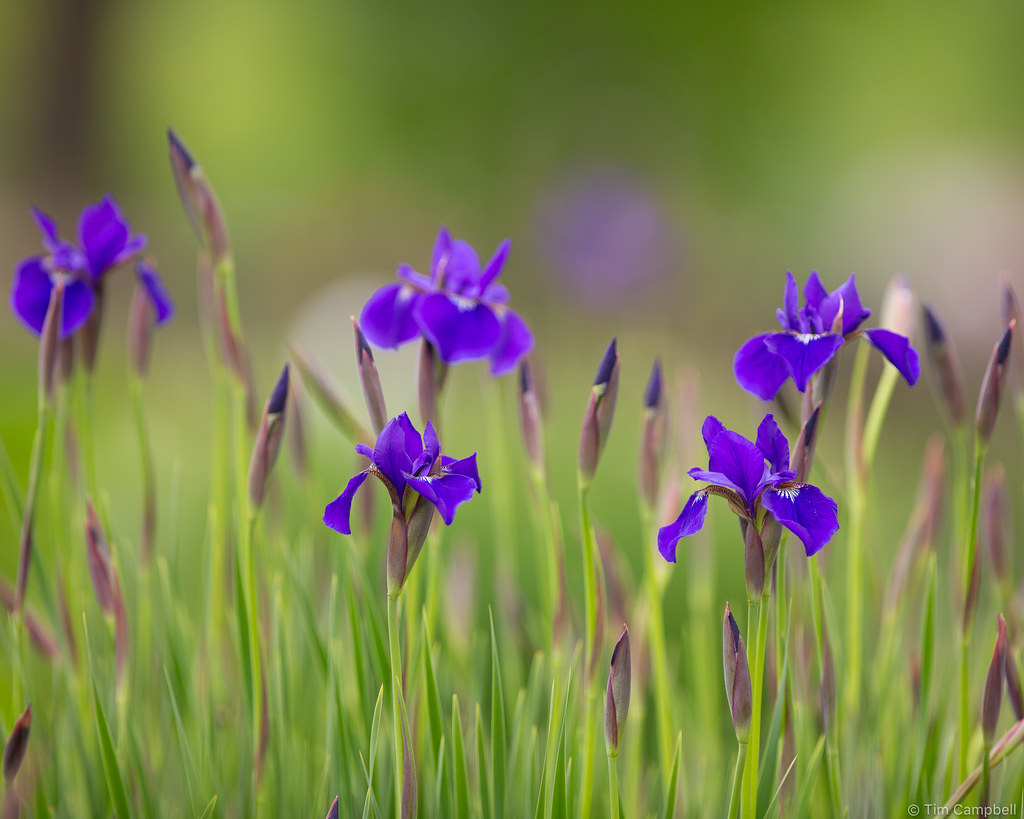Bokeh refers to the "quality" of the blur (good or bad).
Anyway... the three things that go together to produce strong out of focus blur are:
1) LOW focal ratio adds to the blur
2) LONG focal length lens adds to the blur
3) CLOSE subject, distant background (if the background is very close to the subject then the difference in focus between subject and background won't be so strongly different.)
Many lenses are just not capable of producing a very strong blur. Most DSLR cameras come with a "kit" lens and it's usually something an 18-55mm zoom with a variable focal ratio which can be as wide as f/3.5 at the short focal length (wide angle) end, and f/5.6 at the long focal length (narrow angle) end. Unfortunately f/5.6 at 55mm will produce very little blur and likewise f/3.5 at 18mm will also produce very little blur. It's a struggle to get much blur out of these lenses unless you resort to extremes such as putting the subject at closest possible focus distance and putting the background very far away.
It's much easier to do with longer lenses.... 85mm and up and hopefully with a low-ish focal ratio (such as f/2 or lower). You'll even get a little blur with a 50mm lens and a low focal ratio (f/1.8 or f/1.4, etc.) but as you get to lower focal lengths it becomes very difficult to produce much in the way of a pleasing blur. I have a 14mm f/2.8 lens and that lens wants the whole world to be sharp almost no matter what I do. The most I can do is get enough blur to make it look like I just barely missed focusing accurately (the blur isn't strong enough to look intentional.)
As you get to much longer focal lengths (e.g. 200mm) then you can even get pleasing blur at f/4.
I have a 135mm f/2 lens which is basically a cream machine (LOADS of background blur) and a 300mm f/2.8 that produces so much blur that diabetics should not look the photos lest they go into insulin shock from all the sweetness! (Ok, I'm kidding... but just a little). The point is, LONG lenses with LOW focal ratios produce a LOT of blur when you have a CLOSE foreground subject and a DISTANT background (not close to the subject).
This is 300mm at f/2.8. In the (distant) background, there is a patio and people are having tea.
Do you see anyone having tea? Neither do I. But since I took the photo, I know that they were there. This is an example of extreme blur. Sometimes you don't want so much blur that the background is no longer recognizable. I have other photos where we specifically wanted soft blur on the background but wanted to make sure you could actually recognize the background subjects for what they were.... in those cases you back away from using the widest possible focal ratio and use something slightly narrower.
BTW, it is also possible to "fake" the background blur using products such as Photoshop.
The blur in this background is fake:
Here's the original (as shot):
In the original you can read the wine bottle ... Silver Palm (a very pleasant cabernet). But this was done for a restaurant who wanted the attention on the food -- and the wine is there to help support the mood. So we want a bottle (for the mood) and we want you to "recognize" the bottle... we just don't want you to be able to read the bottle.
To produce this, I had to use Photoshop using masks and layers... the top layer has a photoshop "lens blur" filter applied but the background does not. There's also a mask to let me selectively reveal the non-blurred plate of food through the "blurred" upper layer and I had to very carefully feather the blur out from around the edge of the plate to create a believable transition. It took a while to do.
The blur was also done to match the intensity of blur in other shots that were going to be used in the same articles.
So why not just shoot at the same f-stop using the same lens as the other images which had the correct "as shot" blur??
This was the only dish on a wide rectangular plate and composed at an angle. When I used the same f-stop as the other shots, the food (the main subject) was not entirely in focus the way we wanted. So we chose to stop down the lens to increase the depth of field, improve the overall look of the food and then "fake" the blur to match the rest of the photos in the shoot.
While I say it is possible to "fake" the blur (with an example), I have seen some really awful fake background blur. It took me several attempts to try to come up with a fake blur that could pass for natural blur (like all things in photoshop... it's a learning experience. )





![[No title]](/data/xfmg/thumbnail/32/32172-e383665a8becbae2d9a6b61359dae22e.jpg?1734161047)









